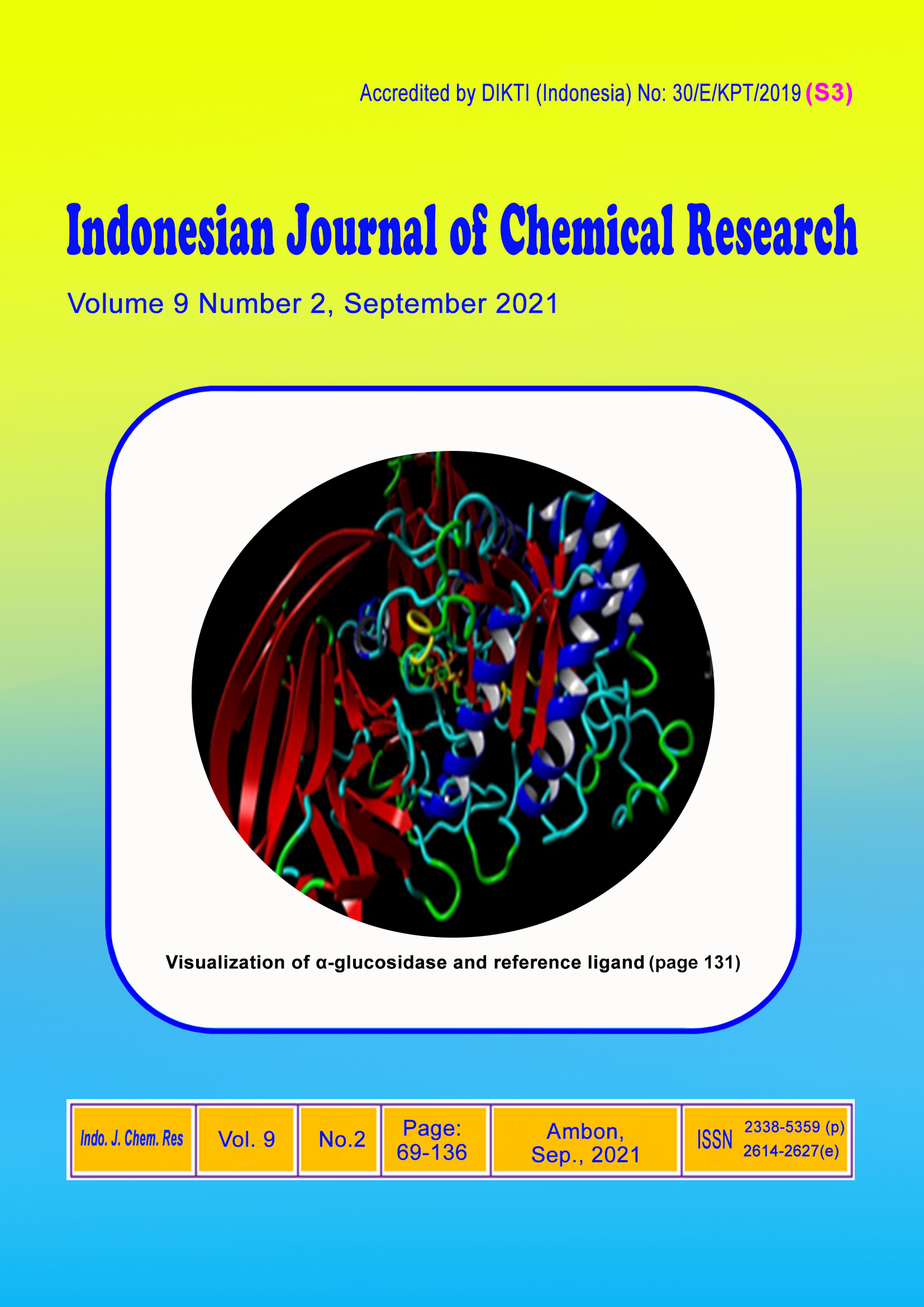Silica Content Analysis of Rice Husks Siam Unus from South Kalimantan
Abstract
Research on the analysis of rice husk content of Siam Unus with various NaOH concentrations (1.0 M; 1.5 M; 2.0 M; 2.5 M; 3.0 M) has been done. This study aims to obtain data on the effect of variations in NaOH concentration on the purity of the silica extract from Siam Unus rice husks and silica characterization of Siam Unus rice husks using Fourier Transform Infra-Red (FTIR) and X-ray fluorescence spectrometry (XRF). The results showed that the combustion of rice husks at 200 °C as the optimum temperature for 1 hour followed by combustion at 600 °C for 4 hours produces grayish-white rice husks with a yield is 20.70%. Silica functional group characterization showed that silanol (Si-OH) and siloxane (Si-O-Si) as dominant functional groups. The result of composition characterization using XRF showed that SiO2 is the dominant compound with the highest percentage of SiO2 is 1.5 M NaOH extract at 42.80%.
Downloads
Copyright (c) 2021 Dwi Rasy Mujiyanti, Dahlena Ariyani, Muna Lisa

This work is licensed under a Creative Commons Attribution-NonCommercial-NoDerivatives 4.0 International License.
Authors who publish with this journal agree to the following terms:
- Copyright on any article is retained by the author(s).
- The author grants the journal, the right of first publication with the work simultaneously licensed under a Creative Commons Attribution License that allows others to share the work with an acknowledgment of the work’s authorship and initial publication in this journal.
- Authors are able to enter into separate, additional contractual arrangements for the non-exclusive distribution of the journal’s published version of the work (e.g., post it to an institutional repository or publish it in a book), with an acknowledgment of its initial publication in this journal.
- Authors are permitted and encouraged to post their work online (e.g., in institutional repositories or on their website) prior to and during the submission process, as it can lead to productive exchanges, as well as earlier and greater citation of published work.
- The article and any associated published material is distributed under the Creative Commons Attribution-NonCommercial-NoDerivatives 4.0 International License.






_copy1.png)










